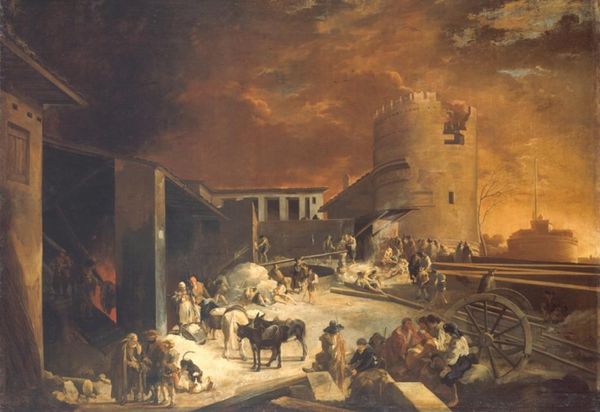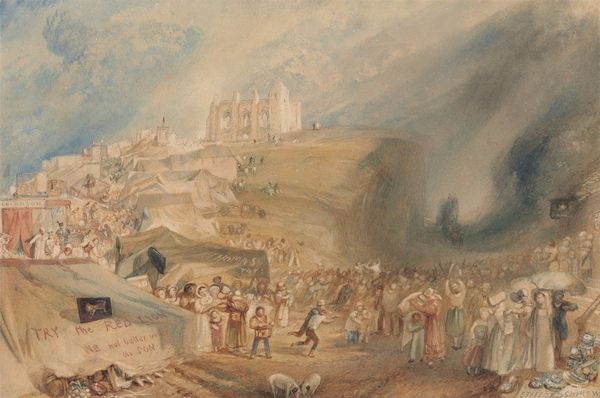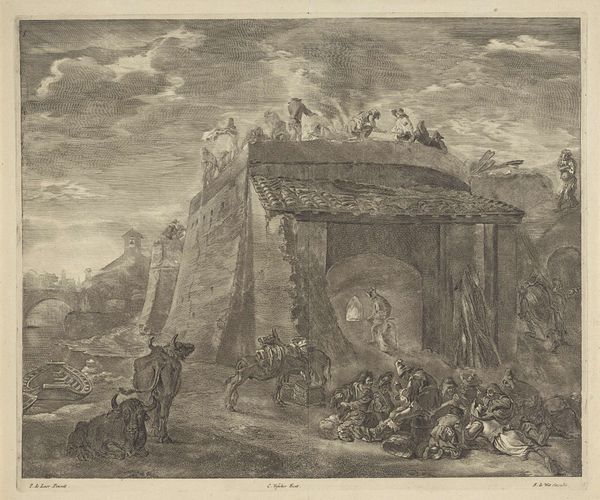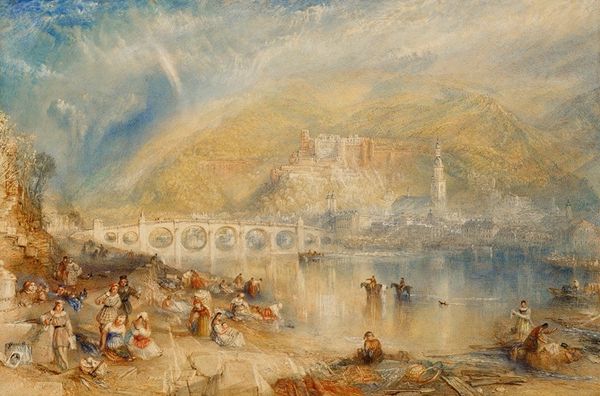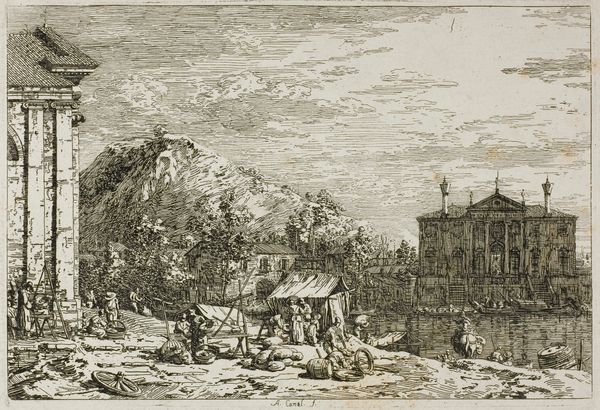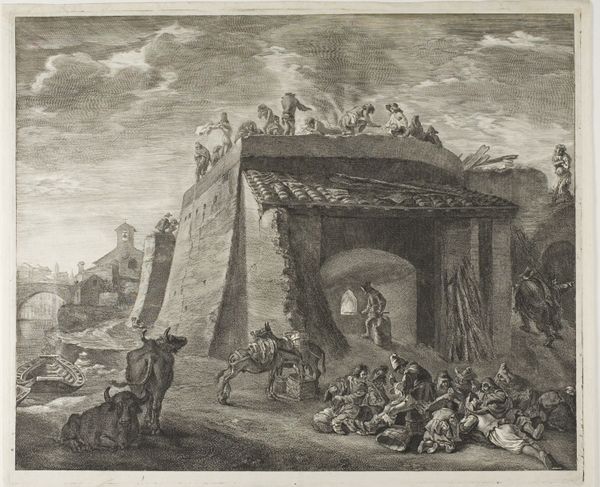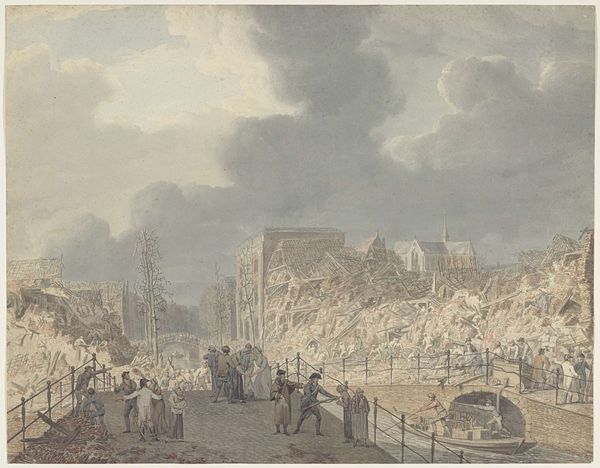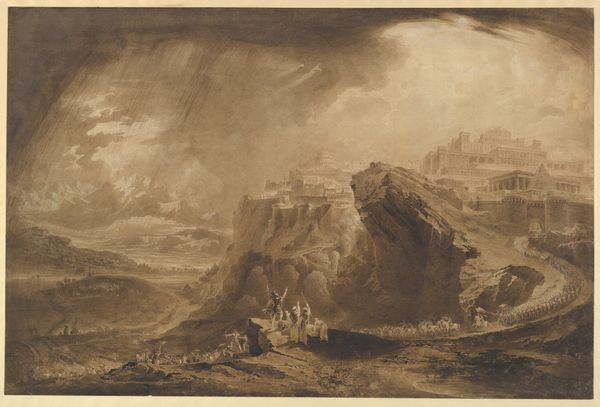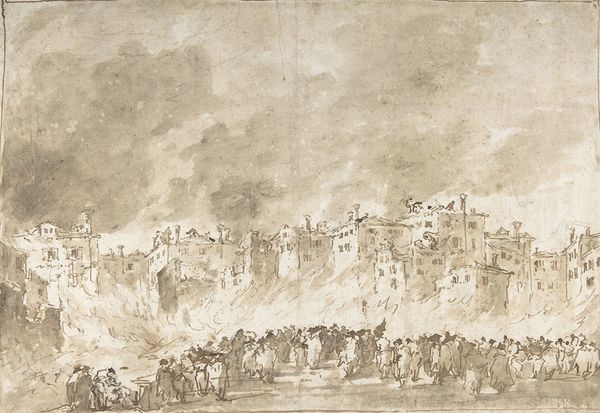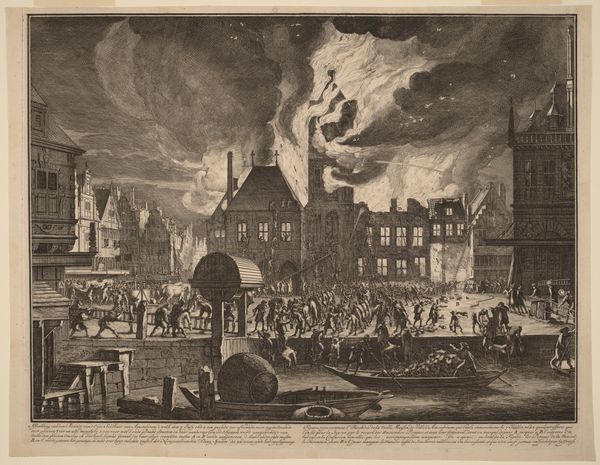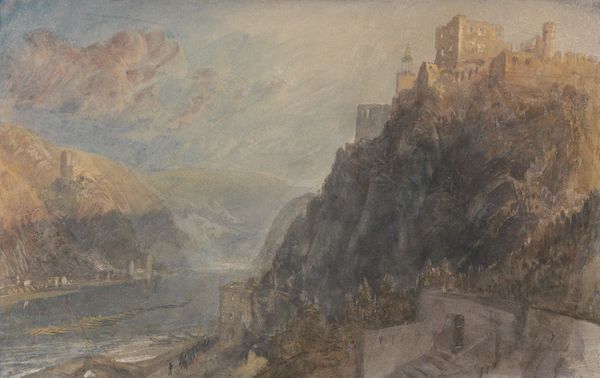
watercolor
#
landscape
#
charcoal drawing
#
oil painting
#
watercolor
#
romanticism
#
watercolour illustration
#
watercolor
Copyright: Public Domain: Artvee
Editor: This watercolor by J.M.W. Turner, "A View of Boppart, with Figures on the River Bank," painted in 1817, evokes a sense of bustling activity along the river. There is a dramatic tension created by the combination of detailed architecture with an active yet moody sky. What do you see in this piece, in terms of symbols? Curator: The overwhelming symbol I detect is memory—both the cultural memory held within the stones of Boppart and perhaps Turner's own memory of this place. The strategic placement of the gate, positioned prominently between the town and river traffic, acts as a gateway through which both commerce and stories must flow. Observe how Turner employs the verticality of the church spires against the horizontality of the riverbank. What emotions do these formal contrasts evoke? Editor: I feel the church spires create a contrast between the grounded reality of daily life on the riverbank and aspirations for the divine. Do you think Turner purposefully combined these elements? Curator: Precisely. Turner understood the power of visual juxtaposition. Consider the cultural significance of Boppart as a site with Roman roots. This deep history would undoubtedly have affected his representation of its architecture and how those architectural symbols resonated with 19th-century viewers, wouldn’t you agree? Editor: Absolutely! Knowing about the Roman history provides greater depth to the ruins Turner depicted. I appreciate the emphasis on how places carry memory. Curator: And Turner was masterful at depicting exactly that interplay between personal feeling and collective cultural history, captured here with washes of color.
Comments
No comments
Be the first to comment and join the conversation on the ultimate creative platform.
